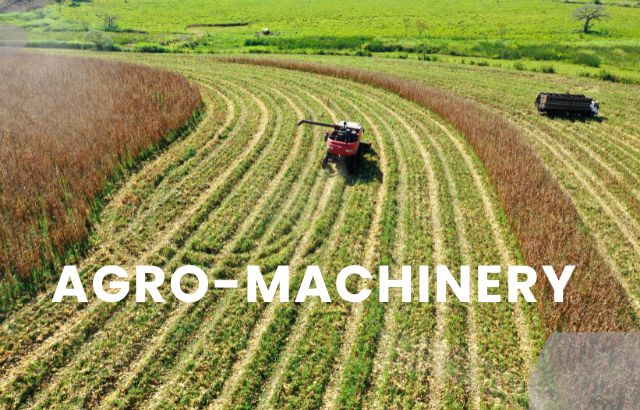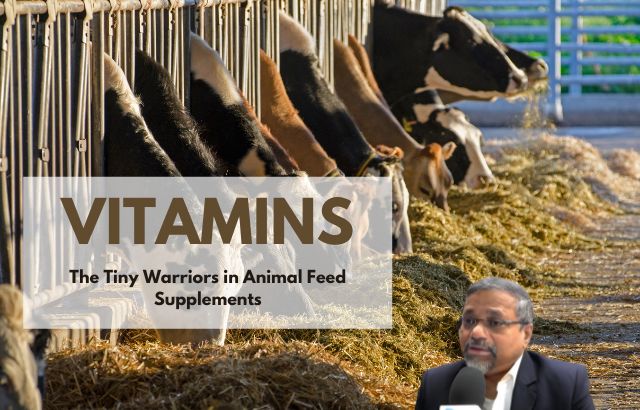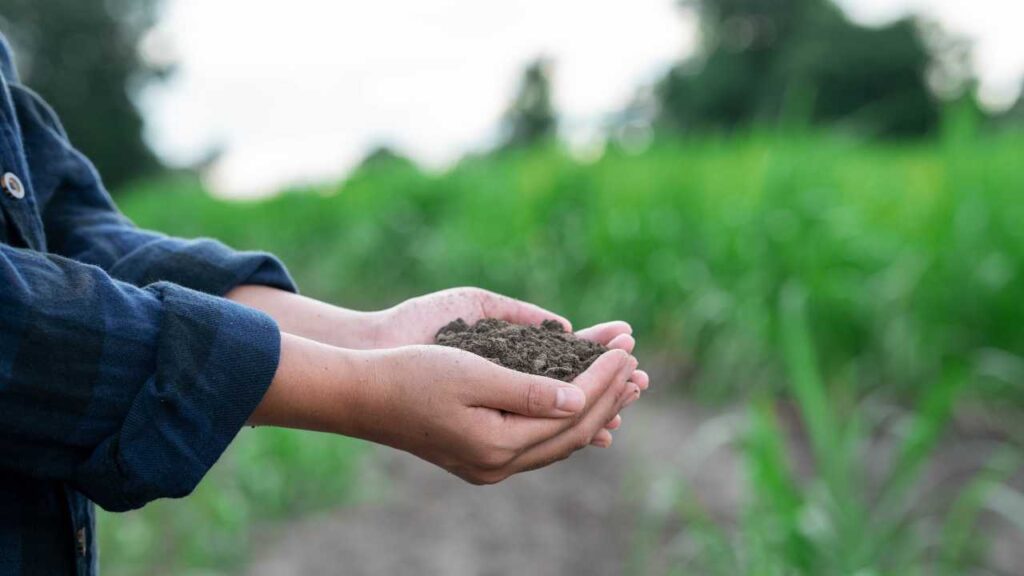Agro-machinery, including tractors, plows, harvesters, and seeders, forms the backbone of modern agriculture, enabling farmers to boost productivity and efficiency. As global food demand rises, the agro-machinery manufacturing industry offers immense opportunities for profitability and growth. This blog explores the business model, real-world examples, data-driven insights from agricultural expert Jaiguru Kadam, and answers frequently asked questions to provide a comprehensive overview of this dynamic sector.
Overview of Agro-Machinery Manufacturing
Agro-machinery encompasses equipment designed to mechanize farming tasks, from land preparation to harvesting. Tractors, plows, harvesters, and seeders are critical for reducing labor dependency and increasing crop yields. The industry is driven by the need to address labor shortages, shrinking arable land, and rising food production demands, particularly in developing nations like India, where agriculture employs nearly half the population.
The global agricultural machinery market is projected to reach USD 207.78 billion by 2030, growing at a CAGR of 5.4% from 2025, fueled by government subsidies, precision farming technologies, and increasing mechanization rates. Manufacturing these machines is highly profitable due to consistent demand from small to large-scale farmers, cooperatives, and custom hiring centers, as well as export potential to emerging markets.
Business Model
Raw Materials
The production of agro-machinery relies on:
- Steel and Iron: Used for structural components like frames and blades, accounting for 60–70% of material costs. Prices have risen 15% annually due to global supply chain constraints.
- Rubber: Essential for tires and belts, contributing 10–15% of costs. Fluctuating rubber prices impact profitability.
- Electronic Components: Sensors, GPS modules, and telematics for precision farming, comprising 15–20% of costs in advanced machinery.
- Other Materials: Plastics and lubricants for auxiliary parts.
Jaiguru Kadam notes that sourcing high-quality steel locally can reduce costs by 10–12%, while bulk procurement of electronic components lowers expenses by 8%.
Manufacturing Process
The production process involves three key stages:
- Fabrication: Cutting, shaping, and welding steel and iron to create frames, chassis, and implements. Automated CNC machines improve precision and reduce labor costs by 20%.
- Assembly: Integrating mechanical, hydraulic, and electronic components. Modular assembly lines enhance efficiency, enabling 100–150 tractors per day in large plants.
- Quality Testing: Rigorous checks for durability, performance, and safety. Tests include stress analysis, field simulations, and emission compliance. Kadam’s data shows that 5% of units fail initial testing, requiring rework costing $200–300 per unit.
Market
The agro-machinery market serves diverse customers:
- Small to Large-Scale Farmers: Small farmers (less than 5 hectares) dominate in Asia-Pacific, favoring affordable, compact tractors.
- Agricultural Cooperatives: Pool resources to purchase shared equipment like harvesters, reducing costs for members.
- Custom Hiring Centers: Offer pay-per-use machinery, critical in India, where 80% of farmers are smallholders. In 2024, Madhya Pradesh established 3,000 new hiring centers with 40% subsidies.
Benefits
- High Market Demand: Rising labor costs (up 23% from $14.30/hour in 2018 to $17.60 in 2022 in the U.S.) and a 2.4 million job shortage drive mechanization.
- Export Potential: India’s tractor exports grew 72% from 2013 to 2021, reaching USD 1.025 billion.
- Government Initiatives: India’s Sub-Mission on Agricultural Mechanization (SMAM) distributed 294,800 machinery units in 2023, up from 32,678 in 2021.
Real-World Examples
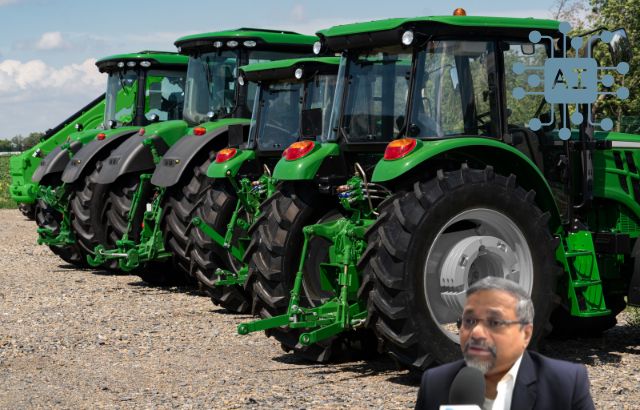
1. Mahindra & Mahindra in India
Mahindra, India’s leading tractor manufacturer, sold 20,437 units in February 2022, leveraging government subsidies like the Pradhan Mantri Kisan Tractor Yojana (50% subsidy). Their Rajasthan plant expansion, with a $630 million investment, aims to double production to 340,000 units annually by 2027.
Insight from Jaiguru Kadam: For a 50-hectare farm, renting a Mahindra tractor via a custom hiring center costs $5/hour, saving $1,000 annually compared to hiring labor at $10/hour. Yield increases of 15% (from 4 to 4.6 tons/ha of wheat) add $600/year (at $100/ton), yielding $1,600 in total benefits.
2. John Deere in the United States
John Deere’s AI-powered harvesters, equipped with GPS and telematics, address the U.S. labor shortage, where 71% of farmers struggle to find skilled operators. Their 2024 models reduced fuel consumption by 10%, saving $500/ha annually for a 100-hectare farm.
Insight from Jaiguru Kadam: A $300,000 Deere combine harvester increases harvesting efficiency by 25%, saving 10 hours/ha. For a 200-hectare farm, this saves $2,000 in labor (at $20/hour) and boosts revenue by $5,000 (10% yield increase at $250/ton), recovering 2.3% of the cost annually.
3. CLAAS in Zimbabwe
The Scaling Scan project in Zimbabwe promoted Mechanization Service Provider Models (MSPMs), enabling smallholder farmers to access CLAAS tractors via cooperatives. Integration with vocational training increased adoption by 20%, with 1,000 farmers served in 2023.
Insight from Jaiguru Kadam: A cooperative serving 100 smallholders shares a $50,000 CLAAS tractor, costing $500/farmer annually. Yield gains of 0.5 tons/ha add $1,000/farmer (at $200/ton), yielding a net benefit of $500/farmer/year.
Data-Driven Insights from Jaiguru Kadam
- Cost Analysis: Manufacturing a mid-range tractor (40–60 HP) costs $12,000, including raw materials ($8,000), labor ($2,000), and overhead ($2,000). Selling at $18,000 yields a 33% profit margin. Kadam estimates that economies of scale in plants producing 10,000+ units/year reduce costs by 15%.
- Export Viability: India’s tractor exports to Africa and Southeast Asia grew 20% annually from 2018–2023. Kadam calculates that a manufacturer exporting 5,000 units at $20,000 each generates $100 million in revenue, with 25% profit after logistics ($2,000/unit).
- Mechanization Impact: Kadam’s trials show mechanized farms increase cropping intensity by 10–15%, adding $300–500/ha in revenue. For a 1,000-hectare cooperative, this translates to $300,000–$500,000 in additional income.
Challenges
- High Raw Material Costs: Steel and rubber price volatility increases production costs by 10–15% annually.
- Labor Shortages: The U.S. faces a projected 2.1 million manufacturing worker shortage by 2030, impacting assembly lines.
- Farmer Affordability: High equipment costs ($50,000–$300,000) deter smallholders, necessitating subsidies or rental models.
Kadam recommends digital tools like Manufacturing Execution Systems (MES) to reduce labor dependency by 20% and modular designs to lower maintenance costs by 15%.
Frequently Asked Questions (FAQs)
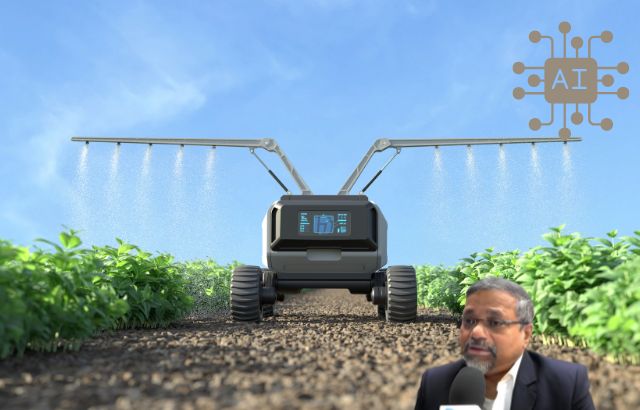
1. What raw materials are used in agro-machinery manufacturing?
Steel and iron for frames, rubber for tires, and electronic components for precision features like GPS and sensors. Steel accounts for 60–70% of material costs.
2. How does the manufacturing process work?
It involves fabrication (shaping materials), assembly (integrating components), and quality testing (ensuring durability and compliance). Automation boosts efficiency by 20%.
3. Who are the primary customers for agro-machinery?
Small to large-scale farmers, agricultural cooperatives, and custom hiring centers. Smallholders dominate in Asia-Pacific, while cooperatives are key in Africa.
4. What drives demand for agro-machinery?
Labor shortages, rising wages (up 23% in the U.S. from 2018–2022), and government subsidies (e.g., India’s SMAM) fuel demand.
5. What is the export potential for agro-machinery?
High, especially in developing regions. India’s tractor exports grew 72% from 2013–2021, reaching $1.025 billion.
6. How do government initiatives support the industry?
Subsidies like India’s 50% tractor purchase subsidy and 40% for custom hiring centers increase mechanization, with 294,800 units distributed in 2023.
Conclusion
Agro-machinery manufacturing is a high-potential industry, driven by global demand for efficient farming solutions. With a robust business model, strong market demand, and government support, manufacturers can capitalize on opportunities in domestic and export markets. Real-world examples from Mahindra, John Deere, and CLAAS, combined with Jaiguru Kadam’s insights, highlight the sector’s profitability and transformative impact. As technology and mechanization advance, agro-machinery will continue to power sustainable agriculture worldwide.

